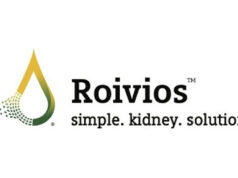 Vizient has announced the publication of its first public report on care utilisation and quality in the USA using data from Medicare’s Data Sharing for Performance Measurement, also known as the Qualified Entity Program (QEP). The report, “Measuring care utilization and quality for those with chronic kidney disease [CKD] by payer and community vulnerability,” evaluates the cost and quality of care provided to patients with CKD and end-stage kidney disease (ESKD) by payer, based on four indicators of resource use and quality, and also explores outcomes through the lens of “high social need communities” using the patent pending Vizient Vulnerability Index, a press release says.
Vizient has announced the publication of its first public report on care utilisation and quality in the USA using data from Medicare’s Data Sharing for Performance Measurement, also known as the Qualified Entity Program (QEP). The report, “Measuring care utilization and quality for those with chronic kidney disease [CKD] by payer and community vulnerability,” evaluates the cost and quality of care provided to patients with CKD and end-stage kidney disease (ESKD) by payer, based on four indicators of resource use and quality, and also explores outcomes through the lens of “high social need communities” using the patent pending Vizient Vulnerability Index, a press release says.
Vizient selected CKD and ESKD for its research “as both are high-cost conditions but can be managed, and even potentially prevented, if diagnosed early in the progression of disease”. Epidemiologic trends in the USA show a rise in rates of diabetes and hypertension, the two leading causes of CKD and ESKD, creating the need for more attention to screening for earlier diagnosis, the press release states.
Additionally, there is a growing body of clinical literature on differences in treatment outcomes when social determinants of health are factored in. This study shows that CKD prevalence and outcomes are worse for patients living in communities with more unmet social needs, highlighting a disparity that has likely been impacted by the use of race-based thresholds for CKD diagnosis, “impacting historically marginalised populations”.
“CKD affects more than 35 million adults, and the Centers for Disease Control and Prevention (CDC) report as many as nine out of 10 people with CKD do not even know they have it. If not carefully managed, CKD can progress to ESKD requiring regular dialysis,” said Madeleine McDowell, senior principal of Advanced Analytics and Informatics, Vizient. “By analysing prevalence rates of CKD and ESKD and health equity data, we were able to identify stark differences in high social need communities both in overall rates of disease and in severity of disease. Most importantly, we found communities with the lowest rates of screening had the highest rates of dialysis underscoring the importance of early and regular screening in high social need communities.”
For its analysis, Vizient has combined Medicare fee-for-service (FFS) claims data received from the Centers for Medicare and Medicaid Services (CMS) as part of the Qualified Entity (QE) program with a proprietary All-Payer Claims set from Sg2, a Vizient company, that contains data for Medicare Advantage, Commercial and Medicaid payers to provide comprehensive insights that can drive improvement and advance health equity. The Vizient Vulnerability Index was utilised to identify community-level variation in outcomes related to CKD.
The report’s findings are detailed in the press release. Among them is the suggestion that, as patients progress through the stages of CKD, the cost of their care increases dramatically, with significantly greater utilisation of inpatient care as seen through higher hospitalisation rates and unplanned readmission rates for those with CKD.
Alongside this, the authors report that the burden of CKD “disproportionately affects the most socially challenged neighbourhoods”. The most socially challenged neighbourhoods had a CKD prevalence that was 40% higher than the least socially challenged neighbourhoods in 2021.
Outcomes related to CKD were found to be worse for those living in the most socially challenged areas. The prevalence of patients on dialysis is seven times higher compared to the least socially challenged neighbourhoods and the average age of a person on dialysis is nine years younger. Within the same city, meanwhile, the prevalence of dialysis is three- to 21-times higher in the neighbourhoods with the most social needs compared with neighbourhoods with the least social needs within the same city.
Communities with low levels of kidney health screenings also had the highest rates of dialysis, the release notes. In neighbourhoods with a high prevalence of CKD, there were 5.1 dialysis patients per 1,000 beneficiaries in low screening communities compared to 2.9 in high screening communities.
“Providers are looking for data and analytic insights that span the care continuum to better understand how to manage patients with CKD and the cost of care. With early screenings and the use of new medical interventions, providers may be able to slow progression and prevent ESKD,” said McDowell. “Early screenings for patients living in communities with high rates of metabolic disease can minimise the number of patients requiring dialysis, reduce inpatient stays and ED visits, and improve the quality of life of the patients. Information from this study can also lead to further analysis in use of medications that can improve patient outcomes.”












